Health and wellness are rapidly emerging as a standout category in the evolving retail landscape. From medical centres and imaging to Pilates studios, gyms, and massage clinics, these tenants are driving leasing demand and playing a pivotal role in asset performance at neighbourhood and sub-regional centres.
Why Wellness Is Booming
A shift toward preventive health, lifestyle-focused services, and community-based care has sparked surging demand for accessible, local health and wellness spaces.
- Australians are spending more than ever on medical services. In 2022–23, national spending on referred medical services, including pathology, diagnostic imaging, and specialist/allied health, reached AUD 21.3 billion, up from AUD 20.2 billion the previous year. Of this, AUD 14.6 billion was government-funded through Medicare. (Source: AIHW ).
- On the fitness side, Australians spent AUD 3.5 billion on gyms and fitness clubs in 2023, with roughly 1 in 5 adults holding a gym membership (Sources: GapMaps, Ausleisure).
- Australia’s wellness economy is now valued at AUD 190 billion, making it the fourth largest in the Asia-Pacific region (Source: AMI).
This growth is being fuelled by:
- An ageing population seeking convenient healthcare
- Consumers prioritising physical fitness, mental wellbeing, and stress relief
- Telehealth models are reducing the need for large-scale GP clinics, freeing up space for smaller, specialised providers
- Increased Medicare coverage for physiotherapy, mental health plans and preventative treatments
- Growth in government funding
- A rise in demand for boutique fitness formats
Australians now visit their local shopping centres not just for groceries, but for everything from Pilates and massage to yoga, acupuncture, and HIIT classes, making wellness an anchor category in its own right.
A Strong Leasing Performer
At Rook Partners, we have seen the health and wellness sector outperform many discretionary retail categories. In FY25 alone:
- 9% of all our leasing deals were in health and wellness services.
- Medical, dental, and wellness tenants are delivering some of the longest lease terms and strongest value ratios in the market.
- Leppington Village launched with over 2,150 sqm of dedicated medical, allied health and wellness space, including a medical centre, pharmacy, optometrist, gym and boutique Pilates studio, boosting daily visitation and family appeal.
- The new Austral Plaza, opening in late 2026, will feature over 1,800 sqm of dedicated health and wellness space, including a dentist, medical centre, radiologist, gym, and pharmacy.
Spotlight: Fitness First Titanium at Kiaora Place
A recent example is our deal to bring Fitness First Titanium to Kiaora Place, Double Bay. This award-winning precinct, developed by Woollahra Council, is already a thriving lifestyle hub, and the addition of Fitness First’s most premium offering takes it to the next level.
The Titanium concept, already showcased in Barangaroo, reimagines the gym experience with luxury interiors, boutique group training, cutting-edge equipment, and premium recovery zones. For Double Bay, it means world-class health and fitness in the heart of the village. For landlords, it shows how leading operators can strengthen asset positioning, attract loyal daily visitors, and complement surrounding retailers.
Why Owners Should Pay Attention
For commercial building and shopping centre owners, health and wellness tenants offer a unique blend of stability and synergy. These operators:
- Invest heavily in custom fit-outs to reduce the risk of early turnover.
- Attract regular, high-frequency visitors from the local catchment.
- Operate beyond traditional 9 to 5 trading hours, activating centres early in the morning and into the evening.
- Pair well with supermarkets, chemists, and fresh food operators to enhance cross-visitation.
The Tenant Mix Advantage
Strategic inclusion of wellness tenants supports the perception of a centre as a local hub. When fitness studios, bath houses, dentists, skin clinics, and chiropractors are part of the mix, they:
- Strengthen the utility and convenience of the centre.
- Encourage loyalty and habitual visitation.
- Tap into growing consumer interest in holistic health, aesthetics, and lifestyle improvement.
A centre with a fitness studio, medical centre, massage therapist, and beauty therapist can cater to a wide demographic, from busy professionals to retirees, making it more resilient to retail shifts.
What We’re Seeing in the Market
We are seeing a proactive shift in how wellness is being integrated:
- Earlier leasing conversations: Medical and wellness spaces are being prioritised during planning.
- Replacing mini-majors: Gyms or integrated wellness clinics are stepping into anchor roles.
- Shared wellness hubs: Providers are co-locating services such as bathhouses, HIIT, physio, Pilates, and massage.
- Design considerations: Building Services and structures need to factor in operator requirements, e.g., did you know a pool will need 16 kPa slab loading?
- Demographics are everything: High-end fitness and wellness centres can command premium membership fees, driving strong competition and higher rents in key locations.
Final Word: What This Means for Centre Owners
If you’re not actively pursuing health and wellness tenants, you could be leaving significant value on the table. These operators drive foot traffic, customer loyalty, and a layer of futureproofing for your asset.
At Rook Partners, we work closely with our clients to secure the right mix of wellness tenants, from boutique fitness studios to full-service clinics, balancing community demand with commercial returns.
Our recent work in bringing Fitness First Titanium to Kiaora Place is one example of how the right wellness tenant can enhance both community amenity and asset performance.
Want to talk to our team about how health and wellness could enhance your asset’s value? Contact us today

